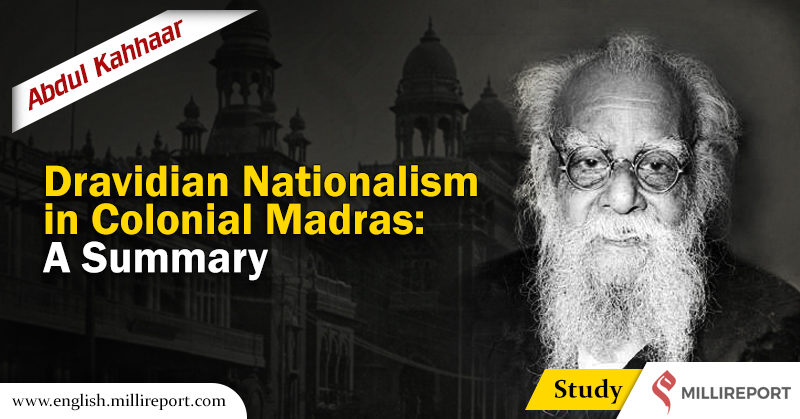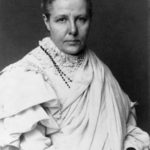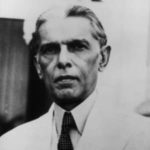
Dravidian Nationalism in Colonial Madras: A Summary
3 October 2018 | Study
It was Robert Caldwell who established (in 1856) that ‘Dravidian’ languages were independent of Sanskrit. In the wake of this thesis and the then rediscovered Tamil classics, Tamil scholars like J. M. Nallaswami Pillai and P. Sundaram Pillai could easily fuel Tamil renaissance and also create an image of Dravidian identity with its own rich cultural past free of Aryan influence. In the meanwhile, an educated non-Brahmin middle class frustrated with the Brahmin domination in the government services was growing in Madras. These non-Brahmin elites invoked the new theory to constitute a pro-Dravidian and anti-Aryan (anti-Brahmin) intellectual discourse so that they could start some sort of identity-politics to fight against the Brahmin supremacy which was prevailing in the bureaucracy. ‘The Madras United League’ was formed by them in 1912. The organisation was renamed as ‘Madras Dravidian Association’ in 1913.

Robert Caldwell
The Theosophical Society, which had been eulogising Brahmanical Hinduism and Aryan civilization, shifted its headquarters from Bombay to Madras in 1882. The second decade of twentieth century saw Mrs. Annie Besant, the leader of the society, starting Home Rule League, and campaigning for the Congress. The spectacle led the non-Brahmin elite to the conclusion that Congress would always champion Brahmin-cause and as such, Dravidian politics should be anti-Congress. The ‘South Indian People Association’ was founded in November 1916 as an anti-Congress and Non-Brahmin platform. The organization started Justice English newspaper on 26 February 1917 and a political party named ‘South Indian Liberal Federation’ in October 1917. The party came to be known as the ‘Justice party’ after the newspaper.

Annie Besant
Justice Party was the main non-Brahmin organization in Madras till 1925. In 1925, E. V. Ramaswami Naicker started the ‘Self-Respect Movement’. The new movement, instead of taking up political issues, focused primarily on social reform. It ignited a virulent campaign against caste hierarchy, patriarchy, and religious superstitions. Agitation modes of the organisation included public-burning of Manusmriti. Self-Respect movement created a new consensus among the non-Brahmins according to which, Brahmanical Hinduism was the root-cause of caste-evils, and regaining of the pure Dravidian past was the way-out. A comprehensive critique of Hindu scriptures was developed subsequently.

M. A. Jinnah
In 1937, the Congress government in Madras introduced Hindi as a compulsory subject in schools. Both the Justice Party and the Self-Respect Movement rose to the situation, and conducted massive protests against the move. The government bid was interpreted as a deliberate agenda to impose North Indian Aryan-Hindu-Brahmin culture, which lacks humanity and gender sensitivity, on the Dravidians. Justice Party and Self-Respect Movement worked hand-in-hand during the agitation and the demarcation practically disappeared. Ramaswami Naicker was elected as the leader of the Justice Party in December 1938.
During the Second World War, E. V. R constantly demanded the ‘separation of Tamil Nadu from the rest of Indian continent’. The Justice Party supported the Muslim League demand for Pakistan, and as a reverse gesture, Jinnah defended the idea of ‘Dravidastan’. But he did not refer to Periyar’s idea in his speeches/negotiations towards the very end of the colonial period.The proposed ‘Dravidastan’ included Malayalam, Kannada, and Telugu speaking regions of South India apart from the real Tamil Nadu. It is important to note that Dravidanad, from the very inception of the idea, was envisaged by its leaders as a safe home-land for non-Brahmin Hindus, Christians and Muslims of the South. Although the separatism of Dravidian nationalism could not find actual realisation, strong anti-Brahmin Dravidian political consciousness survives in the post independence Indian state of Tamil Nadu until now.
